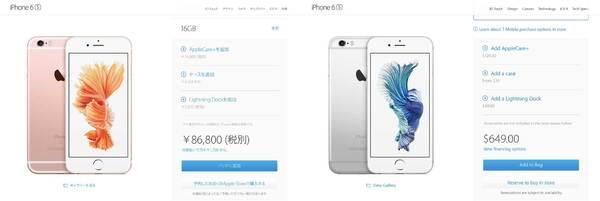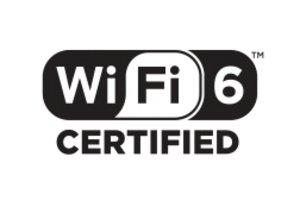The iPhone 6s will finally go on sale on September 25th, and I'm sure many of you have had a chance to try it out over the weekend. However, since I ordered the US version of the iPhone 6s, the body is still on the West Coast of the US, and I missed the festival in Japan.
There should be a lot of orthodox review articles about the iPhone 6s, so this time I would like to write from a slightly unusual point of view.
The US version of the iPhone 6s has advantages such as being able to turn off the shutter sound of the camera and being a little cheaper.
When the iPhone 6 was first released in September last year, the T-Mobile version was sold as a SIM-free version at the US Apple store. However, in January 2015, it became possible to purchase a pure SIM-free version that is not tied to a specific carrier.
Since the release date coincided with CES 2015, I also wrote an article that I bought it at the Apple store in Las Vegas.
On the other hand, the iPhone 6s has not yet appeared in the Apple store as a pure SIM-free version. You must choose one of four US carriers.
However, if you're trying to buy an AT&T, Verizon, or Sprint version, you'll be asked for a new or existing line contract. At the moment, only the T-Mobile version can be purchased for iPhone 6s devices.
But I ran into one big problem here. When you add the T-Mobile version of the iPhone 6s to your cart, the product name says (GSM).
When I try to buy the T-Mobile version in the US, it says (GSM).
In the case of the iPhone 6, even though it was the same A1586 model, it was discovered after the launch that there were two versions, a GSM version and a CDMA version, causing confusion. The CDMA version is a model that supports both GSM and CDMA, and the model released in Japan is also equivalent to this. On the other hand, the GSM version, which does not support CDMA, was sold in Europe and elsewhere.
When the iPhone 6 was released, it was this GSM version that I purchased at the Apple store in Munich while staying in Germany. Since there are no carriers that develop CDMA networks in Europe, almost no one has a problem, but when I was trying to bring it back to Japan, I was in a lot of trouble.

Apple store in Munich. I ended up buying a GSM version of the iPhone 6 here (I have since sealed this memory and erased it from the first page of history).
It is for this reason that I am concerned about the (GSM) notation in the T-Mobile version of the iPhone 6s. iPhone 6s sold by US carriers are already listed on eBay, an auction site. As far as the image of the outer box is checked, there is no indication that the AT&T and T-Mobile versions support CDMA.
However, this is only a problem with the notation on the outer box, and there is also information that it is actually compatible with CDMA. In the blog "From America" by Mr. A Yoshida, which contains detailed information about the mobile situation in the United States, even AT & T and T-Mobile versions are compatible with CDMA, and also have a technical conformity mark There have been reports of it happening.
In the future, there is a possibility that an explicit “US SIM-free version” will appear on the iPhone 6s, so it may be better not to rush to buy it. In any case, whether or not CDMA can be used without problems is the responsibility of the actual purchase. I also ordered the T-Mobile version (GSM notation), so I plan to verify it when I receive it.
However, some of you may be asking, "Why would you go to such lengths to buy the US version?" In the case of iPhone 6, there was an advantage that the shutter sound could be turned off.
It is true that mobile phones sold in Japan have self-regulations in the industry that make the shutter sound of the camera always sound from the viewpoint of crime prevention. On the other hand, overseas, there are many terminals that can turn off the shutter sound as well as the key operation sound, and it can be said that it is good manners to turn off the sound in quiet restaurants.
In the past few years, I have had more opportunities to go abroad, and I try to avoid using Japanese smartphones as much as possible, not only to keep good manners, but also to avoid unnecessary trouble. I'm here.
However, with the new Live Photos feature added to the iPhone 6s, this shutter sound is almost unnoticeable.
When I actually took a Live Photo with the iPhone 6s, there was no sound when I pressed the shutter button, only a small sound indicating that the video recording was finished after shooting. Although it is not completely silent, it is an impression that you can shoot relatively quietly.
Live Photos are similar to video recording, so there is no flashy shutter sound.
And now, with the iPhone 6s, there's one more US version of the deal. The point is that it's cheap. In the US, the cheapest 16GB version of the iPhone 6s is $649, equivalent to ¥77,880 at current rates. On the other hand, the SIM free version in Japan is 86,800 yen, and it will be 93,744 yen including tax.
iPhone 6s has a price difference greater than the exchange rate between Japan and the United States.
In the case of Waikiki, the consumption tax is 4.712%, so the iPhone 6s 16GB version costs about 81,500 yen, but it is still cheaper than the Japanese version.
Although many states in the United States have consumption tax, if you can purchase in a state without consumption tax, there is a difference of up to 15,000 yen or more. If you bring this to Japan, you need to consider shipping costs and Japanese consumption tax, but the US version is still a little cheaper. It's nice to be able to save even a little on the SIM-free version of the iPhone, which is already expensive.


